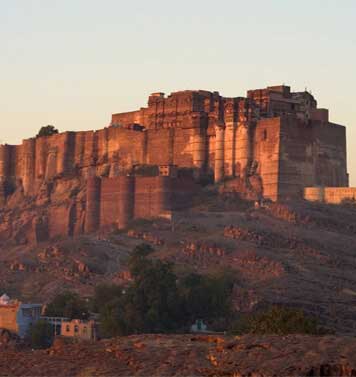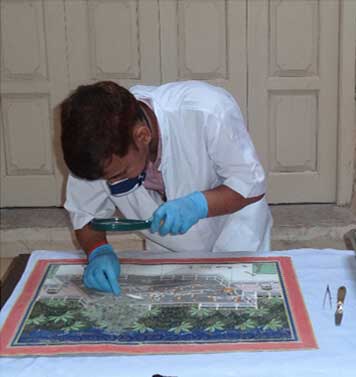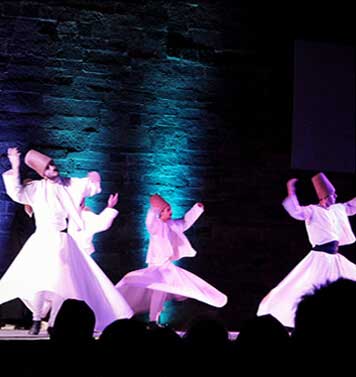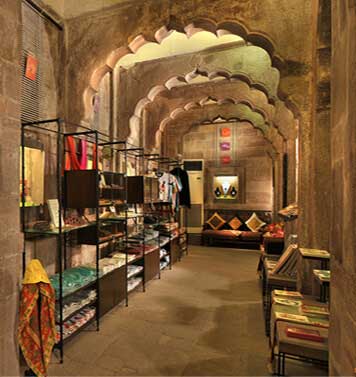Mehrangarh Fort stands a hundred feet in splendor on a perpendicular cliff, four hundred feet above the sky line of Jodhpur. Burnished red sand stone, imposing, invincible and yet with a strange haunting beauty that beckons . Much has been written about the Citadel of the Sun, for truly, it is one of the most impressive in all Rajasthan. So colossal are its proportions that Rudyard Kipling called it “ the work of giants”. Today, it is acknowledged as one of the best preserved fort in India.
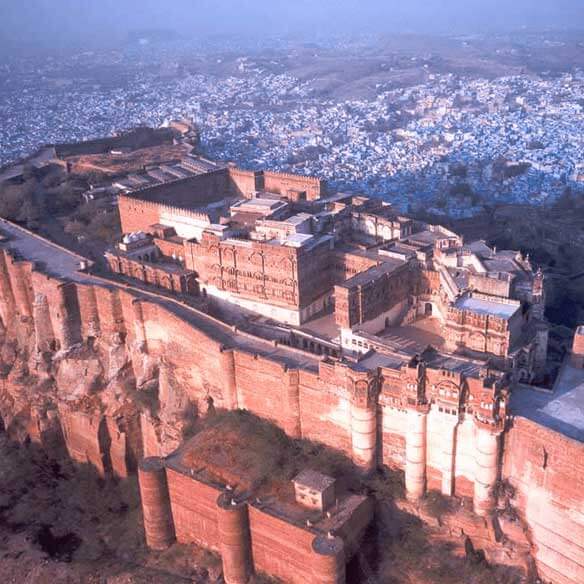
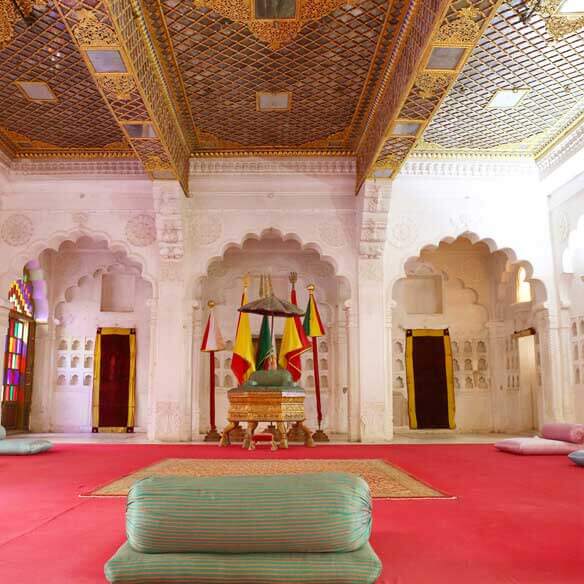
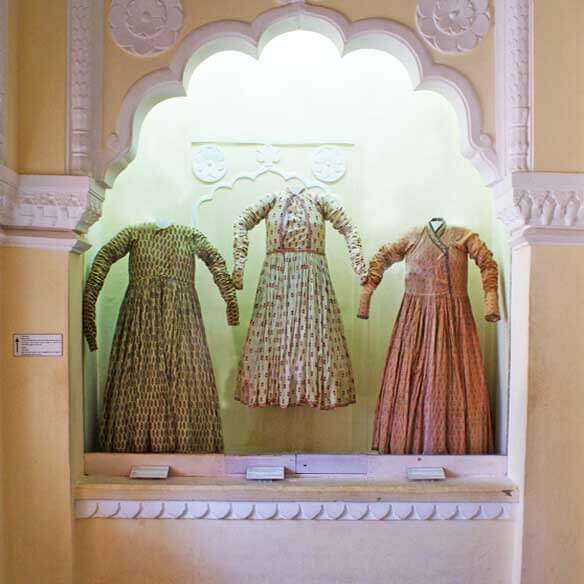
Object Of the month
Jhula (Swing)
Late 19th Century
Soapstone, copper, and iron
Throughout India, joyful swinging is an integral part of celebrations that mark the arrival of spring or monsoon season—both associated with romance and fertility. Swings (jhula) were installed in Marwar’s garden palaces during the monsoon, when the maharaja partook in celebrations with royal women.
Made of soapstone fixed on a metal frame, this swing was hung using chains attached to four swan-shaped hooks on the base. The act of swinging is associated in ancient Indian texts with fertility rituals in which a priest or sovereign swings on a jhula, uniting earth and sky and invoking heaven’s blessings on his land and people.
Object Of the month
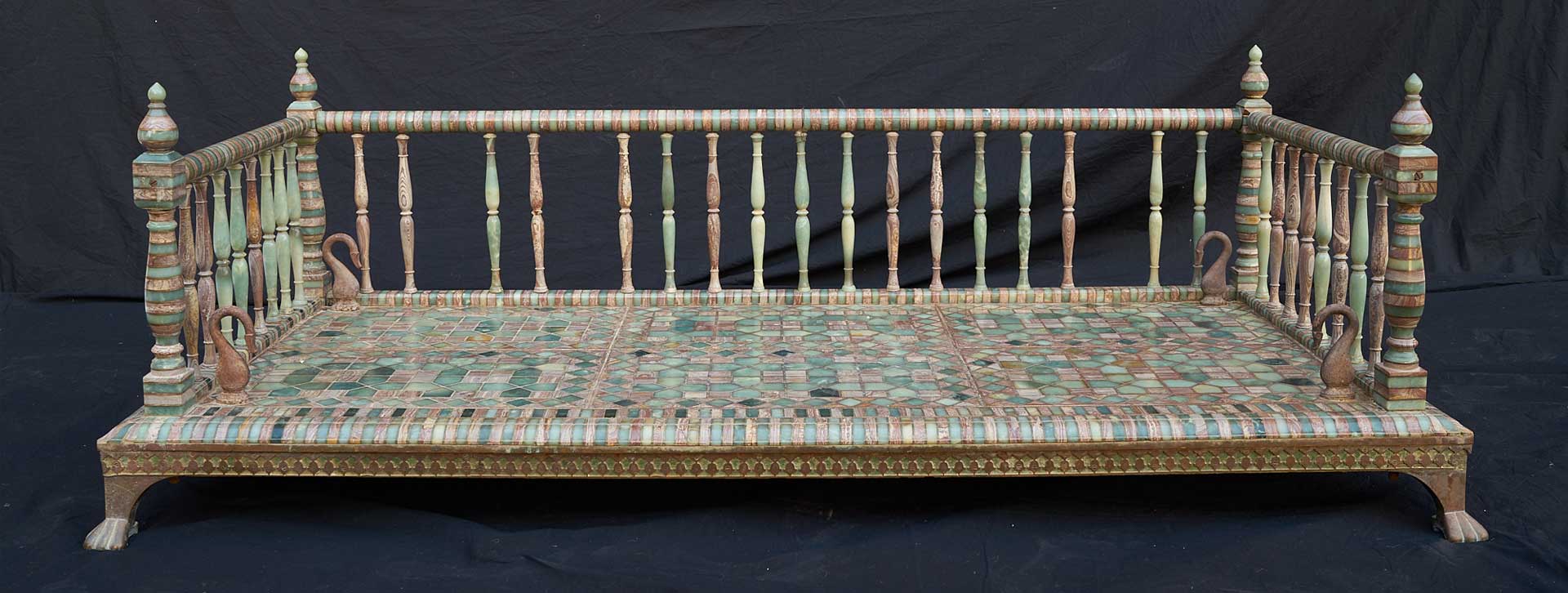
Jhula (Swing)
Late 19th Century
Soapstone, copper, and iron
Throughout India, joyful swinging is an integral part of celebrations that mark the arrival of spring or monsoon season—both associated with romance and fertility. Swings (jhula) were installed in Marwar’s garden palaces during the monsoon, when the maharaja partook in celebrations with royal women.
Made of soapstone fixed on a metal frame, this swing was hung using chains attached to four swan-shaped hooks on the base. The act of swinging is associated in ancient Indian texts with fertility rituals in which a priest or sovereign swings on a jhula, uniting earth and sky and invoking heaven’s blessings on his land and people.


